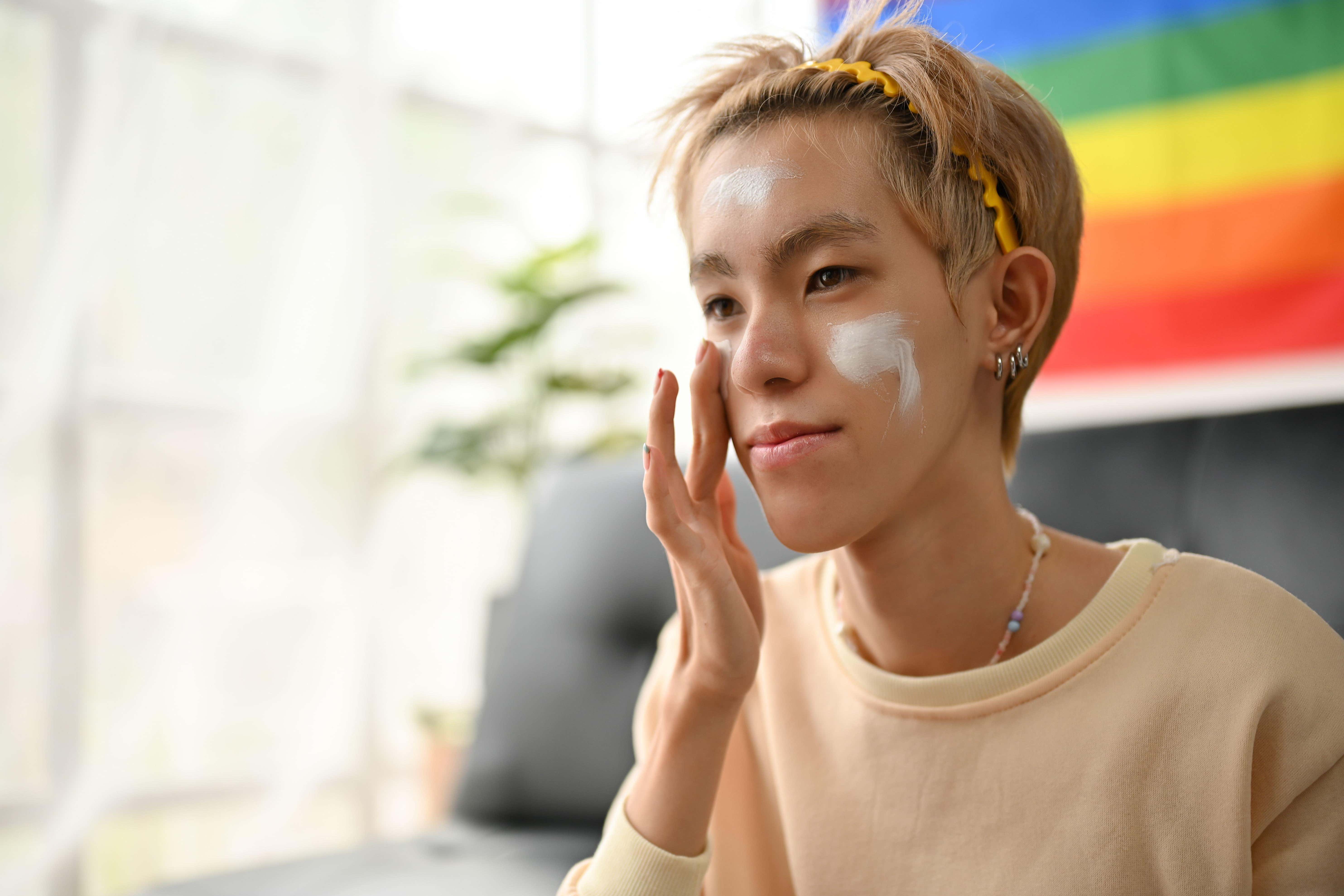SPF cocktailing: Why you should steer clear of the buzzy TikTok trend
Skin experts warn against mixing your sunscreen with make-up products. By Prudence Wade.

‘SPF cocktailing’ is the latest beauty trend to make waves on TikTok.
It’s all about mixing your favourite SPF with another product – such as concealer or highlighter – and applying that as a ‘cocktail’ onto skin.
In theory, the idea sounds good – the aim is to reduce the white cast some SPFs leave, and mean less steps slathering products onto your skin in the morning – but dermatologists and skin experts have started pointing out the potential dangers of this new trend.
“SPF cocktailing is a recipe for disaster in so many ways,” says Dr Ross Perry, medical director of Cosmedics skin clinics.
“By mixing SPF with products such as concealer or highlighter you are leaving the skin entirely exposed to the dangerous UV rays, which will very likely burn the skin and potentially lead to skin cancer down the line, not to mention leaving you more prone to premature ageing.”
Dr Paris Acharya, leading aesthetic doctor and face surgeon agrees, saying: “When you mix an SPF with your other make-up products, such as foundation or concealer, you are changing the overall properties of the SPF and diluting the strength of the product.
“This will therefore reduce the protection that you will be getting from the SPF. There may also be certain products within your make-up products that may interfere with the way that your SPF is meant to work.”
However, Perry understands why people might be looking for ways to make their SPF look better.
“Sunscreens are notoriously cosmetically unattractive purely in part to the ingredients. The reason for this is that’s how they prevent the sun’s rays penetrating into the skin. The suncream companies already try to dilute this down as much as possible in order to make it cosmetically acceptable, however I appreciate in some instances this does not quite go far enough.”
So for Perry, it is a “balance between having someone wearing something that will protect your skin, versus not wearing it”. He adds: “I don’t advocate mixing the ingredients together, as it may reduce efficacy. I do believe though that if this is the only way people will wear sunscreen, then some sunblock is absolutely better than no sunblock.”
But make no mistake: the best option is wearing SPF that hasn’t been mixed with any other products. “It only takes one sunburn in a lifetime to lead to skin cancer. [Skipping sunscreen] isn’t something you should be doing at all, and in no way should be encouraged,” says Perry.
If you do want to reduce the white cast of sunscreen, Perry’s advice is to “apply a good moisturising cream prior to using a sunscreen – this will help the sunscreen absorb into the skin and reduce the tint”.
While Perry doesn’t recommend mixing your products together, he does suggest that layering is fine: “If you apply them all separately and give them a chance to absorb first.”
Acharya has some other recommendations for best practice when it comes to sunscreen.
“My ultimate top tip is to always use a broad spectrum SPF. Broad spectrum protects you from both UVA and UVB rays which helps the skin to stay youthful and will help to reduce premature ageing and sunspots,” she advises.
“Another important tip for using an SPF is to always apply it to the face and neck to ensure full coverage and protection of all exposed areas. The skin on your face and neck is some of the first to age on your body so it’s vital that we care for these areas properly.”
Acharya recommends an SPF30 or above for your face, and adds: “It is always recommended to reapply your SPF throughout the day at least twice to maintain maximum protection.”
5 of our favourite SPFs…
These sunscreens are so good, you’ll want to apply them solo.
1. Collistar Protective Sun Cream SPF 50+, £35, LookFantastic
2. Caudalie Vinosun Protect Very High Protection Lightweight Cream SPF50+, £23
3. Paula’s Choice Advanced Sun Protection Daily Moisturiser SPF 50, £33.15 (was £39)
4. Biore UV Aqua Water Essence Sunscreen SPF50, £15.99, Superdrug
5. PCA Skin Daily Defense Broad Spectrum SPF 50+, £42